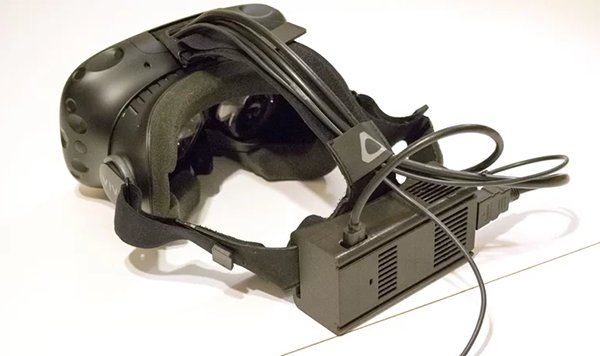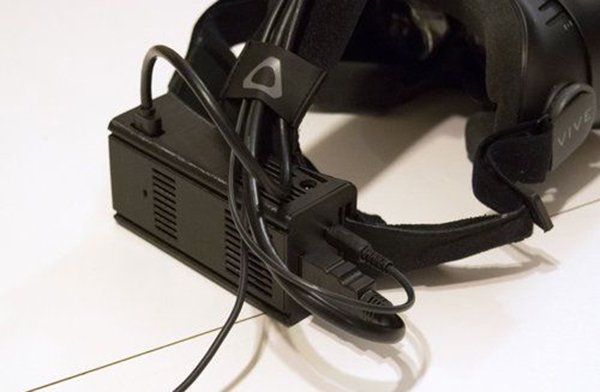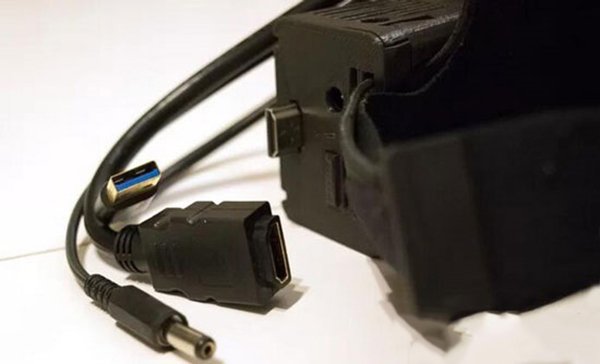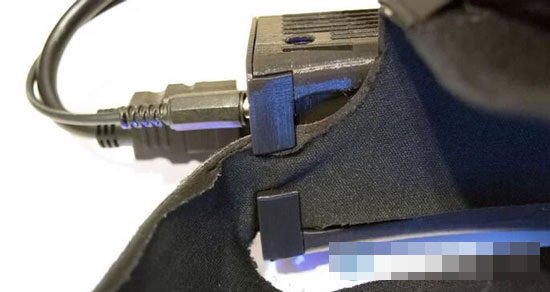Wireless VR is a hot topic at this year's CES conference. Nearly six companies have announced or demonstrated wireless VR upgrade kits related to Vive and Rift, including TPCast and DisplayLink. In the turbulent CES conference, a company called Sixa released a wireless VR solution that supports standard 5GHz WiFi.

We contacted Sixa after the conference and they showed and explained the technology. Of course, understanding through words is very different from what you see with your own eyes. Due to the bold remarks made by Sixa, we need to experience the Rivvr system first hand to determine the potential of this technology.
Sixa pointed out that because its proprietary compression technology can reduce 10Gb data stream to 40Mb, this technology is suitable for 2.4GHz and 5GHz WiFi networks. Sixa provides cloud-based desktop hosting services, and they have adapted cloud compression algorithms to make them suitable for Rivvr VR systems and can then support high-end VR systems such as HTC Vive and Oculus Rift. In the end, Sixa plans to provide cloud-based VR-Ready devices so that users can play VR games without PCs. With the help of wireless networks, VR heads, and Rivvr wireless receivers, you can access VR content directly from the cloud.
Sixa's goal sounds incredible, but it's easy to speak and set goals. The hard part is implementing the plan. Sixa agreed that we should experience the technology ourselves, so they prepared a prototype for us.
Sixa is preparing to begin production of the first 4000 Rivvr components, but they have no final hardware. So the company sent us one of the 3D printing prototypes.

Of course, the prototype we have won't be considered the ultimate consumer product, and we can't be sure if the components will change at that time. But the prototype gives us a glimpse of how the Sixa solution works, as well as the specific settings.
The Rivvr receiver box needs to be attached to the back of the head to replace the long cable. The Rivvr receiver includes two USB 3.0 ports, an HDMI output, power input and output ports, and a button to switch the device's power. The receiving box also includes a common lithium-ion battery pack and a set of four LED lights for displaying the remaining power. Sixa's design includes a small computer, similar to the Raspberry Pi. We didn't try to open the receiving box because we didn't want to risk destroying the prototype, so it wasn't clear what hardware was inside.
The Rivvr kit includes a short cable that connects the display to the receiver. Among the equipment that Sixa provides to us, it includes a Vive pre-installed with a Rivvr receiver (but it is not difficult to install it on its own). The head-mounted cable is hidden under the removable panel. After opening, you will find the power cable, USB cable, HDMI cable and audio jack. Pull out each cable except the audio cable and replace it with a short cable. Then, the short cable runs through the rail and connects to the corresponding port on the Rivvr device. The Rivvr receiver is attached to the back of the headband.

In addition to the Rivvr receiver and Vive system, Sixa also provided us with an ASUS ROG G701VI VR-Ready gamepad with a preloaded Rivvr transmitter. Sixa said that because of the inability to update the Rivvr prototype's hardware remotely, they chose to provide a system with a specific Steam version installed. To ensure that the installation is not affected by the update, Sixa sets the Steam folder to read-only and sets the account to log on offline. For these reasons, our access to content is limited.
Sixa preloaded some of the games, including Space Pirate Trainer, Audioshield, Tilt Brush, and Everest VR. This means that we can't use "Raw Data", "Project Cars" or "Arizona Sunshine" for testing because this part of the game is more demanding and is more suitable for testing the performance of wireless systems. Because the Steam folder was set to read-only, we were also unable to run Nvidia's FCAT VR software on the system because we could not write the log file. Therefore, we must wait until the final version of Rivvr to perform these tests.
Sixa's prototype setup also included a Ruckus R710 wireless access point (a wireless head-up running 5GHz wireless network) because the company configured it for local testing without Internet connectivity. We don't want to tamper with the configuration, so we didn't connect the computer to the Internet, which means we can't run Basemark's VRScore latency test.

The Rivvr system also includes a Fit-PC headless HDMI adapter that enables additional display output without the display attached.
Sixa pre-installed the software, pre-configured the hardware, and provided all the equipment we needed, but we still need to follow the steps. We expect that Sixa will streamline the process before shipping to users. However, our prototype is somewhat subtle, so if the steps are too fast or in the wrong order, the connection will fail.

First, make sure you turn on your wireless network. In our case, we need to turn on the power to the Ruckus access point until the 5GHz network lights up.
Once the network is ready, double click on the power button of the Rivvr receiver. At this point, the Vive's display should turn red. Rivvr takes a minute or two to fully boot. When ready, the Vive's light should turn green and the display will light up. At this time, you should see the characters "Rivvr waiting to connect" in the header.

When the head is turned on, insert the headless HDMI adapter and turn on the PC. If you have already turned on the PC, please close it before inserting the Fit-PC adapter. After the PC finishes booting, open the Rivvr desktop software.
The software will automatically start Steam and SteamVR, and will automatically search for the head. If you follow the steps correctly, Rivvr software should be able to find the head. In addition, make sure that the head is within range of the SteamVR locator/base station. If you are using Vive for the first time on your PC, SteamVR should prompt you for calibration. We do not use the base station provided by Sixa, so we must configure it ourselves. If you have configured your play space, you should be able to use it immediately.
It must be admitted that I am skeptical of Sixa's claim. Virtual reality requires high performance and low latency, and it is hard to imagine that compression systems and wireless networks will not add significant delays to the equation. Sixa's solution is not perfect, but this company solved most of my suspicions.
When I first stepped into this wireless space, I was convinced that Sixa's system was successful enough. After opening "Space Pirate Trainer", I walked a lot and it was very fast. Although I tried hard to create a scenario that would add a lot of delays, Sixa's wireless system can still keep up with my level of activity.

Of course, the Rivvr system is not perfect, but it can achieve the most important functions. Despite the pressure, we did not notice any significant delays for most of the time. However, the image occasionally becomes very blurred, which is like watching satellite TV in a rainstorm. It's hard to tell why, but we suspect it's related to the performance of the PC. When many robots appear on the screen at the same time, there will be a delay in the system. We also noticed that this also happens when passing through the Chaperone guide system.
To test our theory, we opened Everest VR. Solfar Studio uses thousands of images in the experience to create the texture set of Everest VR, which is a severe test for Sixa's wireless system. Sure enough, we noticed significant picture breaks. This situation seems to be related to the performance of the game. We then let the system cool down first and then open Everest VR again. This time the performance of the system is much better.
I'm used to having a cable hanging from my back, but after playing the wireless version of Space Pirate Trainer for 5 minutes, I realized how limited the cable is. This freedom makes me more focused on the game world, without worrying about cable tangles, being tripped or the range of cables allowed.
Sixa's Rivvr prototype proved that they are not just speculation. The Rivvr system and the technology behind it are indeed effective, but how good the effect is remains to be seen. Although it was prototype hardware and non-standard configuration, we were able to take a first look at Sixa's wireless VR solution. We just couldn't judge the effect of the consumer experience.
We look forward to seeing the final product and completing the delay test to see how much impact the Rivvr system has on game performance. It also looks forward to testing Sixa's wireless systems through a wider range of content. For example, for performance-critical games like Arizona Sunshine, what will be the effect of running on WiFi?
Aurora Disposable Vape Device Vaping Pod Systems
Shenzhen WeiKa Technology Co.,Ltd. is a professional e-cigarette manufacturer and enterprise integrating R&D, design, production and sales and service of the electronic cigarette atomizer products, established in 2020.
We are actively developing and producing all kinds of reliable and unique atomizer products. We centre on research, developing, high quality and safety, and focus on better vaping experience in all aspects to our customers. We have advanced production equipment and strict production control system, each process has strict management, from production to delivery have been strictly tested to ensure the classic quality. Zgarvape for the future!
Aurora E-cigarette Cartridge is loved by the majority of consumers for its gorgeous and changeable colors, especially at night or in the dark. Fruits Flavors series, plant flavors series & special flavors series.Up to 16 different flavors for choices. A new design of gradient our disposable vape is impressive. Our vape pen and pods are matched with all the brands on the market. You can use other brand's vape pen with our vape pods. Aurora series Pods systems, the first choice for professional users!
16 Available Flavors (3Pods*2ml):
Amazing Cantaloupe / Coke on the Rocks / Ice Coconut / Ice Lolly / Iced Mung Bean / Longjing Tea / Mango Feast / Mountain Spring / Peach Tempting / Pineapple Juice / Refreshing Melon / Refreshing Mint / Rich Strawberry / Rose Litchi / The Ocean / Watermelon Juice





Pod System Vape,Pos Systems Touch Screen,Empty Disposable Vape Pod System,400Puffs Pod Vape System
Shenzhen WeiKa Technology Co.,Ltd. , https://www.zgarette.com